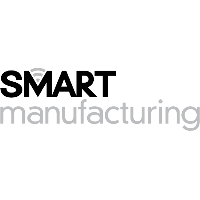By William Sobel, Chief Strategy Officer, VIMANA
Unplanned downtime and production loss due to equipment failure is one of the leading losses for manufacturers. Most shops perform maintenance on a fixed schedule or on failure. This means a machine will be maintained regardless of how often it is used and unexpected breakdowns will stop production. Scheduled preventative maintenance is inefficient for many reasons since the schedule reflects average or nominal use and the timing is based on anecdotal experience.
Maintenance is often performed too often, wasting money and resources. And, paradoxically, unneeded maintenance can cause additional stress on the equipment and increase the rate of failure. Even worse, maintenance is not performed often enough as utilization and conditions change and machines fail prematurely. This is especially important for job shops with high mix and variability.
Maintenance follows a well-known progression:
- scheduled and reactive maintenance,
- maintenance based on machine tool use and feedback,
- predictive maintenance using sensors and analytics,
- prescriptive analytics that determine an optimal solution to maximize maintenance procedures.
The second step in the progression—where maintenance is performed based on equipment use instead of on schedule or reacting to failure—is worth a closer look. This is like changing the oil in your car when your reach a certain mileage, not every six months, even if your car has been sitting in the garage. It is arguable this will give a shop the biggest ROI and is the best place to begin.
Use-based maintenance is predicated on collecting data from manufacturing equipment. The initial phase may only collect simple data, such as when the machine is on or off and active or inactive. Once a baseline has been established, one must enhance to consider individual components and processes. The following two areas are required for a use-based maintenance solution: the data must be contextualized to individual components of the machine and manufacturing processes; it must also be aggregated so that a statistically significant sample can be created to determine the optimal maintenance criteria.
Different processes will have different wear profiles and impact on parts of the machine. For example, cutting aluminum will wear very differently than cutting titanium. To properly contextualize data from manufacturing equipment, it is necessary to understand the manufacturing process and adjust the maintenance program to match the use of the machine and the projected wear on the components.
Data analytics is required to identify usage by applying pattern-matching rules and statistical models, provided by services like VIMANA Enrich, to understand the active states and categorize the processes being executed on the equipment. These intervals are used to determine the remaining life of specific components of the machine and send alerts to the maintenance system.
The second issue with maintenance is developing a statistical model that correctly predicts the failure of equipment. There are two concerns: the small number of similar machines running the same process and machines are not run to failure. Therefore, it Is difficult with a small sample size to build a model that can predict wear under all conditions. One way to solve this is to increase the sample size by collecting data across multiple sites and shops and build a model that will correlate failure with prior events. This requires a crowd-sourcing platform that can aggregate data from thousands of machines and create statistical models that will continuously learn and improve based on empirical data.
The VIMANA cloud platform solved this for cutting tools by using machine learning to understand how the tools behave across a large population of features, materials, and processes, determining optimal operating conditions. VIMANA uses the same mechanism to optimize maintenance activities along with a ticketing system to track the procedures that have been performed.
To see the article from its original source, Smart Manufacturing Magazine, click here.


